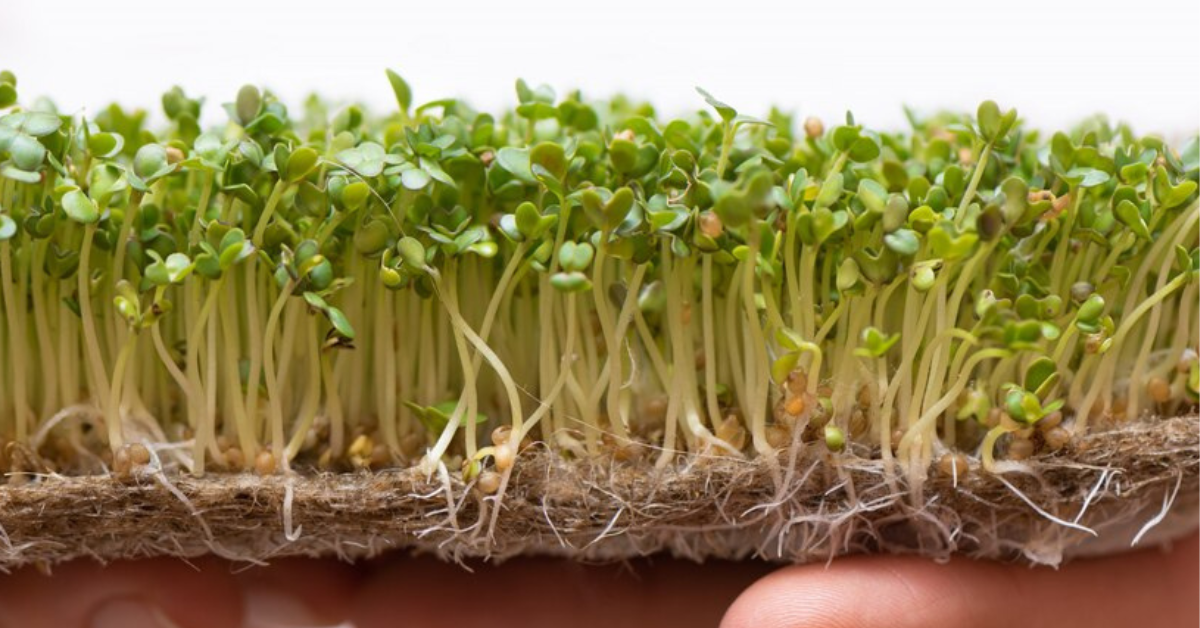
Microgreens have taken the health and culinary world by storm, praised for their intense flavors, vibrant colors, and concentrated nutritional value. Whether you're a hobby gardener, urban farmer, or someone looking to start a small agribusiness, microgreens offer a fast and rewarding way to grow fresh greens at home. But one critical factor that determines the success of your microgreens is the growing medium—and that's where coir and cocopeat shine.
➤ What Are Microgreens?
Microgreens are young vegetable greens harvested just after the cotyledon leaves (the first leaves to emerge from the seed) have developed, usually within 7–21 days after germination. They are not to be confused with sprouts or baby greens.
➤ Popular Microgreens Include:
- ➜ Radish
- ➜ Sunflower
- ➜ Broccoli
- ➜ Beetroot
- ➜ Mustard
- ➜ Pea shoots
- ➜ Basil
- ➜ Coriander
Despite their tiny size, microgreens pack a punch. They contain up to 40 times more nutrients than their mature counterparts, according to some studies.
➤ Why Choose Coir and Cocopeat for Growing Microgreens?
Traditional soil-based methods can be messy and inconsistent, especially in small spaces. Coir and cocopeat offer a cleaner, more sustainable, and efficient alternative.
➥ What Is Coir?
Coir is a natural fiber extracted from the husk of coconuts. It’s biodegradable, renewable, and has excellent water retention properties.
➥ What Is Cocopeat?
Cocopeat, also known as coir pith or coir dust, is a byproduct of processing coconut husks. It’s lightweight, sterile, and holds water exceptionally well—ideal for seed starting and growing microgreens.
➤ Advantages of Using Coir and Cocopeat
- Eco-Friendly: Made from renewable coconut waste and reduces deforestation.
- Excellent Water Retention: Retains up to 8–9 times its weight in water.
- Aeration and Drainage: Ensures healthy root development.
- Sterile and Disease-Free: Resistant to fungal and bacterial pathogens.
- pH Neutral: Near-neutral pH (5.5–6.5), suitable for most varieties.
- Lightweight and Mess-Free: Ideal for urban gardeners.
➤ Step-by-Step Guide to Growing Microgreens with Coir and Cocopeat
- Choose Your Seeds: Use untreated seeds like radish, mustard, or sunflower.
- Prepare the Tray: Fill with moistened cocopeat up to 1–2 inches deep.
- Soak and Sow: Soak larger seeds, sow evenly, and press gently into medium.
- Cover and Germinate: Cover tray to block light; keep warm and dark for 2–4 days.
- Light and Water: Remove cover, place in sunlight, water lightly daily.
- Harvest: Cut microgreens when 2–3 inches tall with true leaves.
➤ Post-Harvest: What to Do with Used Cocopeat?
Reuse if clean, or compost it for other gardening uses.
➤ Tips for Success
- ➜ Avoid overwatering to prevent mold.
- ➜ Ensure good air circulation.
- ➜ Sterilize trays before each use.
➤ Common Issues and Solutions
| Problem | Cause | Solution |
|---|---|---|
| Mold growth | Overwatering or poor ventilation | Reduce watering, improve airflow |
| Poor germination | Old seeds or improper temperature | Use fresh seeds, maintain warm conditions |
| Yellow leaves | Lack of light | Move to sunnier spot or use grow lights |
➤ Final Thoughts
Using coir and cocopeat to grow microgreens is a smart, sustainable choice. It’s eco-friendly, simple to manage, and produces consistent, healthy crops. Perfect for kitchens, markets, or hobbies!
Copyright 2024 © Digisnare Technologies LLP . All Rights Reserved

